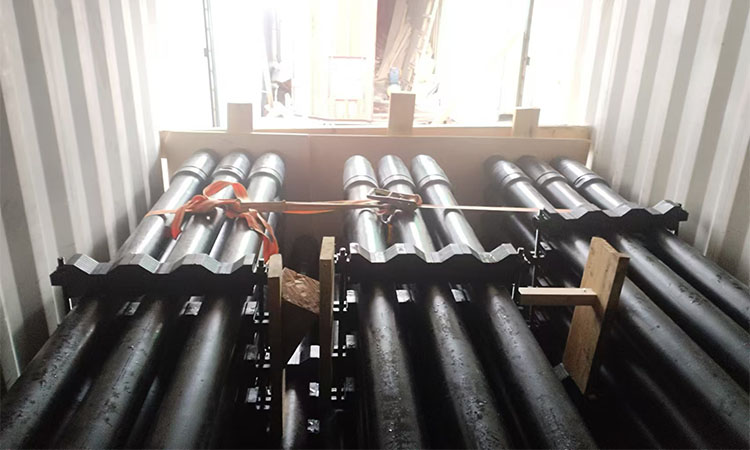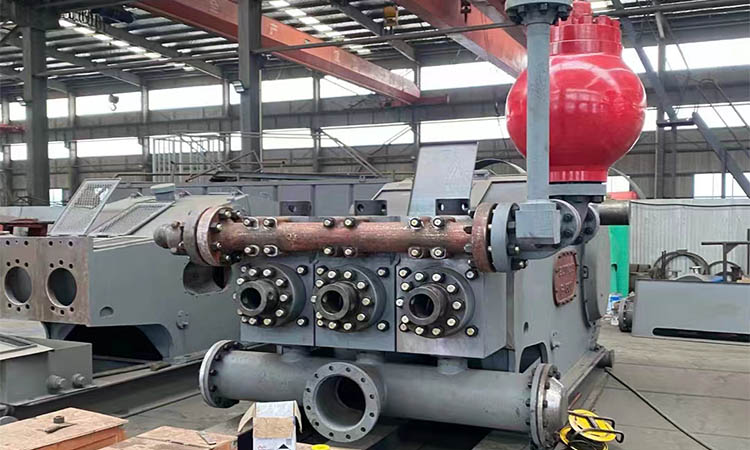Sino Mechanical's 5" Drill Pipes for European customers are packed and shipped
Sino Mechanical has completed the production, inspection and loading of the 5" Drill Pipe supplied to European customers and is now sending it to customers. Based on the long-term good cooperation experience with customers, the initial inquiry, quotation and drawing confirmation of this drill pipe order were very fast and smooth. In order to meet the urgent requirements of customers, Sino Mechanical quickly completed the production, inspection and delivery of all drill pipes within 1 month, saving customers a lot of time.

What is drill pipe?
Drill pipe is a steel pipe with a groove at the tail, which is used to connect the surface equipment of the drilling rig and the drilling and grinding equipment or bottom hole device at the bottom of the drilling well. The purpose of the drill pipe is to transport drilling mud to the drill bit and raise, lower or rotate the bottom hole device together with the drill bit. The drill pipe must be able to withstand huge internal and external pressure, twisting, bending and vibration. In the process of oil and gas extraction and refining, drill pipe can be used multiple times. Drill pipe is divided into three categories: square kelly, drill pipe and heavy weight drill pipe. The connection order is square kelly (1 piece) + drill pipe (n pieces, determined by the well depth) + heavy weight drill pipe (n pieces, determined by the design of the drill tool assembly). In the process of oil and gas extraction, the drill pipes can be used many times.
Classification of drill pipe.
Drill pipe is divided into three categories: square kelly, drill pipe and heavy weight drill pipe. The connection order is square kelly (1 piece) + drill pipe (n pieces, determined by the well depth) + heavy weight drill pipe (n pieces, determined by the design of the drill tool assembly). The bare tube and the original steel pipe are made into drill pipe after multiple processing steps. First, through the thickening process of the steel pipe, The outer surface of the smooth pipe is bent inward, and the wall of the steel pipe is thickened. Next, the thread is processed and copper is plated to increase strength. Then a non-destructive quality control inspection is carried out, followed by welding of the steel pipe body joints. After that, the pipe body will undergo welding heat treatment and welding final treatment to eliminate welding residual stress. Before the finished drill pipe is painted and packaged, other tests are carried out on the finished steel pipe, including hardness test, pressure test and non-destructive test.
The length of the drill pipe is generally about nine meters.
Steel grade and strength of drill pipe.
The steel grade of drill pipe refers to the grade of drill pipe steel, which is determined by the yield strength of drill pipe steel. AP| (American Petroleum Institute) divides drill pipe steel grades into five grades: D, E, 95 (X), 105 (G), 135 (S). The higher the drill pipe steel grade, the greater the yield strength of the pipe, and the greater the various strengths of the drill pipe. In the strength design of the drill string, it is recommended to increase the steel grade to increase the strength of the drill string instead of increasing the wall thickness.
What are the technical features and precautions of Sino Mechanical drill pipe?
Steel pipes and round steel are made into drill pipes after multiple processing steps. First, the end of the steel pipe is hydraulically upset by medium frequency heating to increase the wall thickness of the pipe end. Next, thread processing and appropriate treatment are performed. Geological drill pipes require the joints to be connected to the drill pipe by threads, while oil drill pipes are made by friction welding the joints to the rod ends.
(1) The end of the drill pipe is heated by medium frequency, hydraulically upset, and heat treated to effectively eliminate the internal stress of the previous processing.
(2) The locking joint is made of 40Cr or 42CrM0 material, which is tempered and heat treated after rough processing and nitrided after fine processing to effectively eliminate the problems of sticking and pulling. It is more wear-resistant and easy to disassemble.
(3) All threads are cut and formed on a CNC lathe using a forming blade to ensure precise fit and strong interchangeability.
Precautions for the use of drill pipes
1. When using it for the first drilling, you should first "grind the new buckle", which includes applying thread oil innovation, then tightening it with the drilling rig, opening the buckle, applying thread oil and opening it again, repeating this three times, to avoid new wear and buckle.
2. Keep the drill pipe in a straight line between the ground and the ground as much as possible, so as to avoid the side force of the threaded part and cause unnecessary wear and tear. It is very important to pay attention to anchoring the drilling rig to avoid force movement during construction.
3. When using a new drill pipe, it should be determined that the thread of the front section of the drill bit (protecting the shaft head) is also close to the new one. The turning head of a bad buckle can easily damage the thread of the new drill pipe, causing leakage, buckle, looseness, etc.
As the exploration and exploitation of oil and natural gas becomes increasingly difficult, deep wells, horizontal wells, large-reach wells, sulfur-containing environments, low-temperature environments, etc., the performance requirements for drill pipes are becoming increasingly higher.


